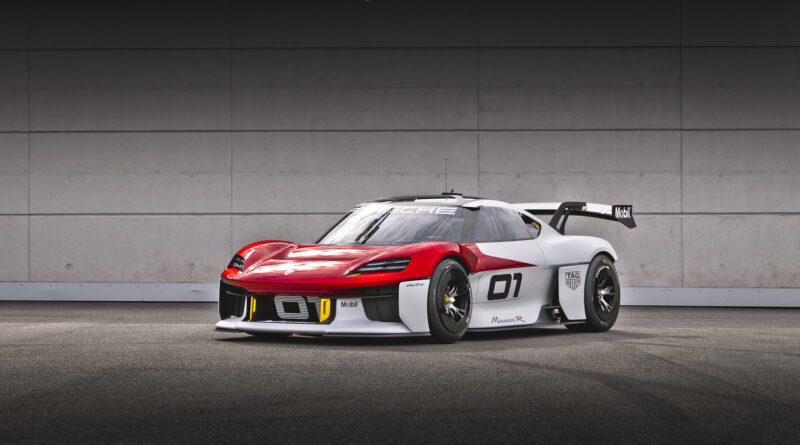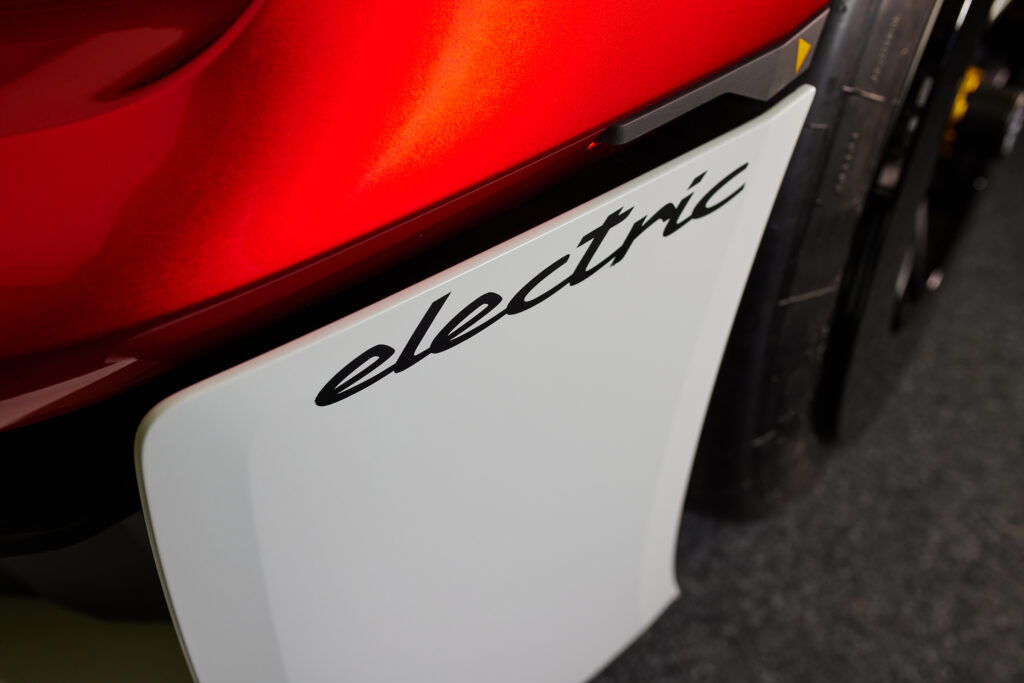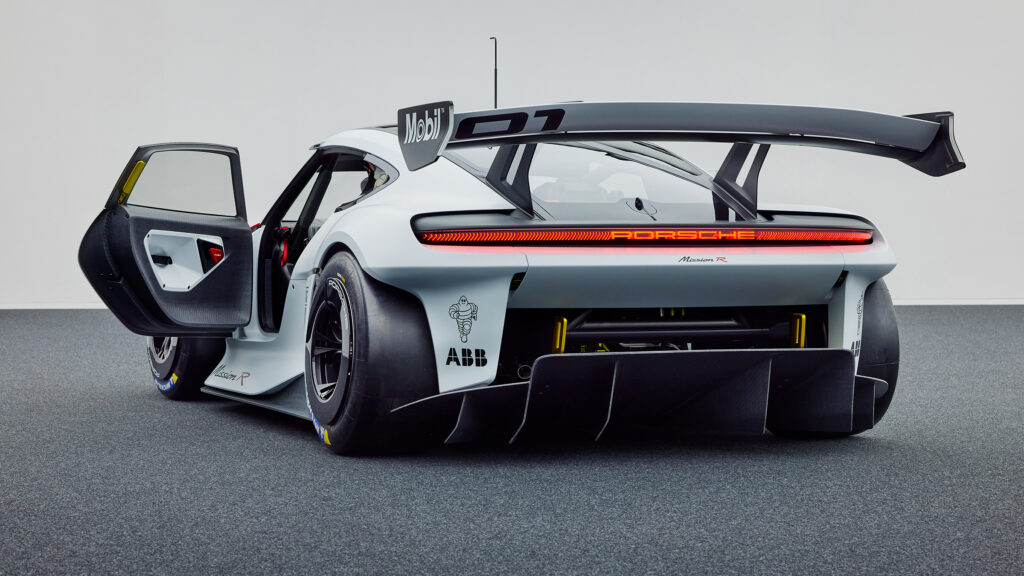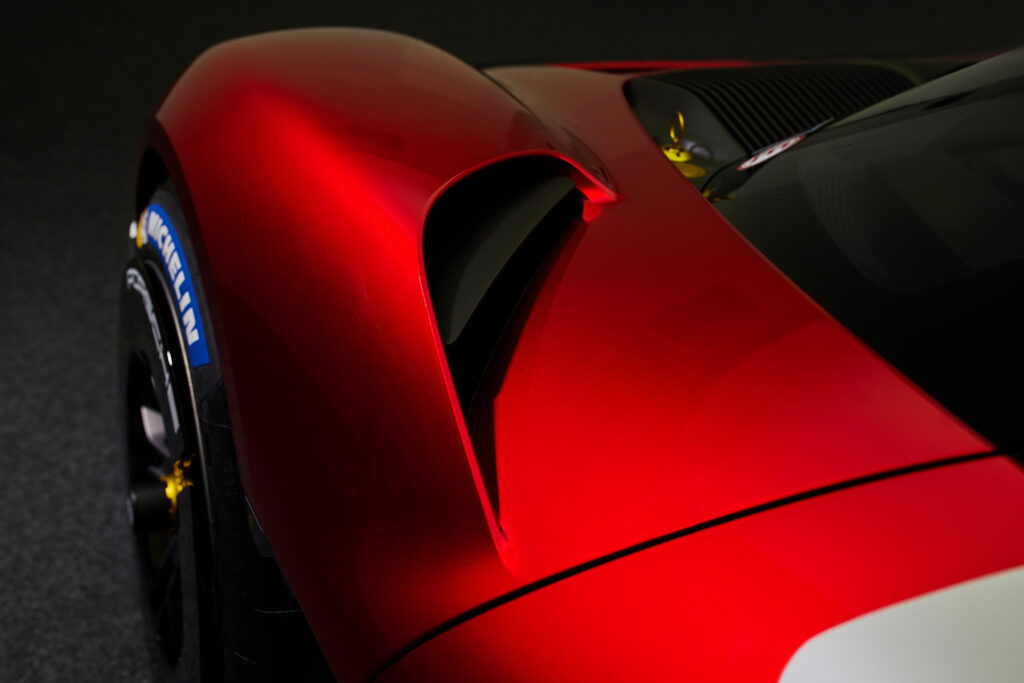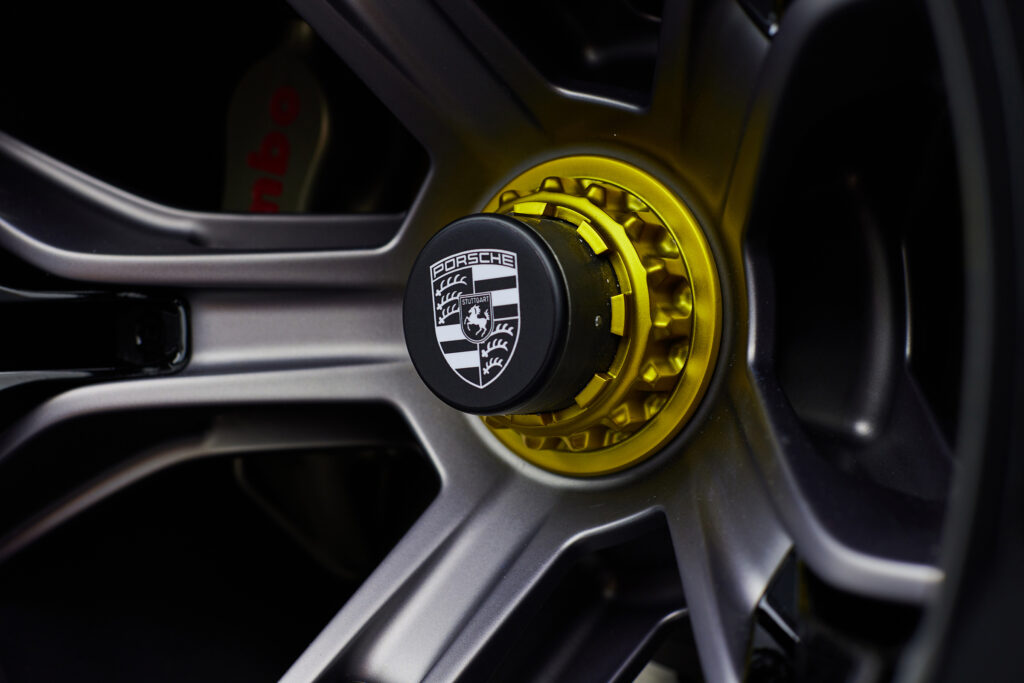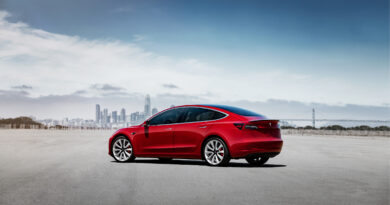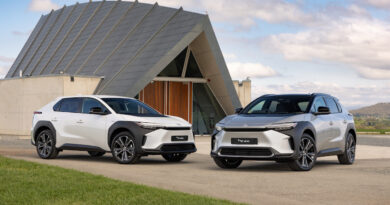Porsche Mission R gives 900V fast-charging EV vision of electric race car
Porsche has unleashed its vision of the race car of the future with the Mission R concept, which was revealed today at the 2021 Munich motor show.
The purposeful-looking race car borrows design inspiration from the Taycan EV and 911 sports car to create a tantalisingly cool track weapon that Porsche says is “our vision of all-electric customer motorsports”.
FEATURE: Porsche Taycan Turbo S versus 911 Turbo: EV v ICE sports car track shootout
READ MORE: Electric Porsche Macan hits the road ahead of 2023 arrival
READ MORE: Cult colours comeback for updated Porsche Taycan
READ MORE: Taycan Cross Turismo shows off Porsche’s dirty side
It’s officially a “vision of what customer motorsports will look like in the future”, just as the Mission E unveiled in 2015 was “the Porsche vision of tomorrow’s e-mobility” that eventually became the Porsche Taycan.
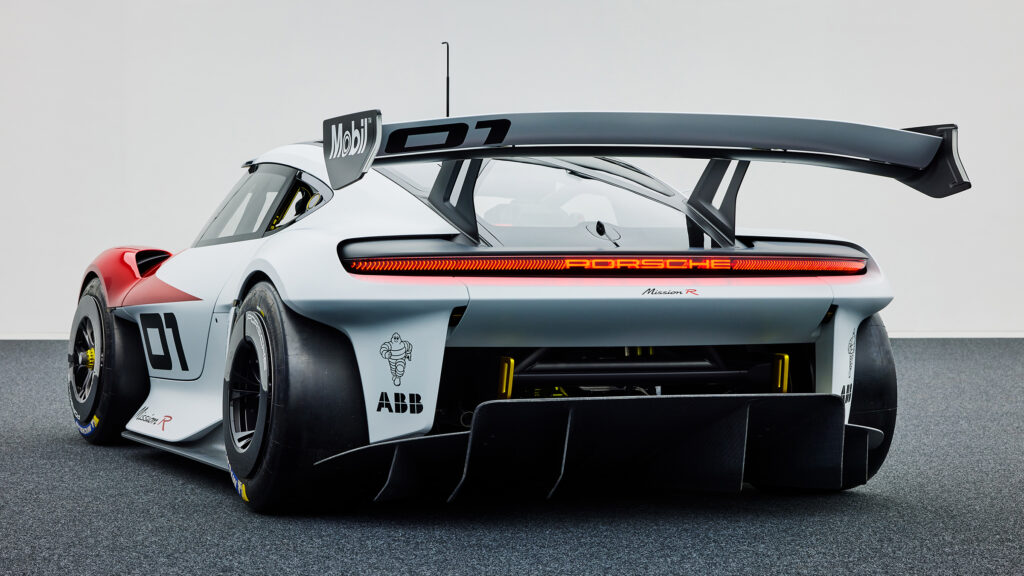
At 4326mm long, Porsche says the Mission R is slightly longer than a Porsche 718 Cayman, but its 1990mm width is slightly wider.
It is also believed to preview an upcoming electric version of the 718 Cayman/Boxster road car.
Mission R is all about track performance
The Mission R has an electric system with about 80kWh of capacity feeding two electric motors.
Porsche says the e-motors are “newly developed”, the one powering the front wheels producing up to 320kW and the one driving the rear wheels a maximum of 480kW.

Combined, they can produce 800kW – more than a modern Formula 1 car – but only when in “qualifying mode”, which cannot be used continuously.
In regular race mode the maximum output is 500kW, at which point Porsche says the electrical system run continuously without the need to reduce power due to heat build-up in the batteries.
Battery temperatures are crucial to the performance and reliability of an EV. Porsche made a big deal when revealing its Taycan that the car needed to produce its best consistently and be able to lap a race track without temporarily reducing power, as some Teslas do (the Tesla Model S Plaid also requires a battery pre-conditioning process to prepare for the car’s fastest starts). That’s something we learnt during our shootout between at Porsche Taycan Turbo S and a 911 Turbo at The Bend in South Australia.
Key to that high peak power delivery of the Mission R is something Porsche describes as “innovative direct oil cooling” of the batteries.

The 0-100km/h time for the Mission R is claimed to be less than 2.5 seconds and the top speed north of 300km/h.
It results in lap times that Porsche says are commensurate with those of a 911 GT3 Cup car, which forms the backbone of various one-make championships around the world, including Australia.
A GT3 Cup Car is almost as fast as a V8 Supercar in Australia, which translates to an average speed around Bathurst’s Mount Panorama of about 176km/h.
Charge ’em up – fast!
Almost as fast as the Mission R’s track pace is its charging ability.
The Mission R uses a 900V electrical architecture and Porsche Turbo Charging, which the company says can perform a 5-80 percent top-up in as little as 15 minutes.
It can accept up to 340kW of charge.
The Mission R also has an innovative construction that uses a carbon fibre exoskeleton as the roof and also the roll cage.

That means less fighting for space with a roll cage inside the car – as well as providing more natural light.
Aerodynamics clearly play a big role in making the Mission R lap a track quickly.
There’s an enormous rear wing as well as skirting around the car and a diffuser under the rear bumper to help suck the car to the road.

There are also hints of sustainability in the materials used throughout.
The body is made mostly of natural fibre reinforced plastic that has flax fibres that are a byproduct of farming.
Plus there’s a big dose of tech, including an F1-inspired race car steering wheel with a digital display showing key data.
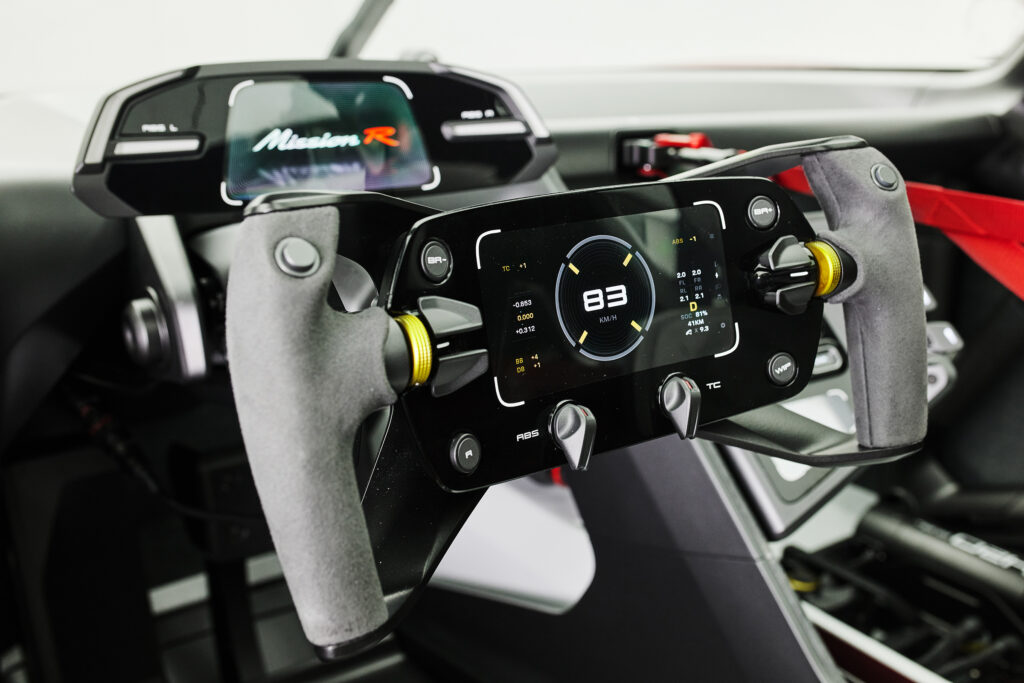
What looks like an instrument cluster closer to the driver’s line of sight displays images from the rear/side-facing cameras, while a third digital display in the centre houses other information, including the driver’s biometric data.
So, will the Mission R replace the 911 GT3 on the track?
Porsche is not walking away from petrol on the race track, as least not initially.
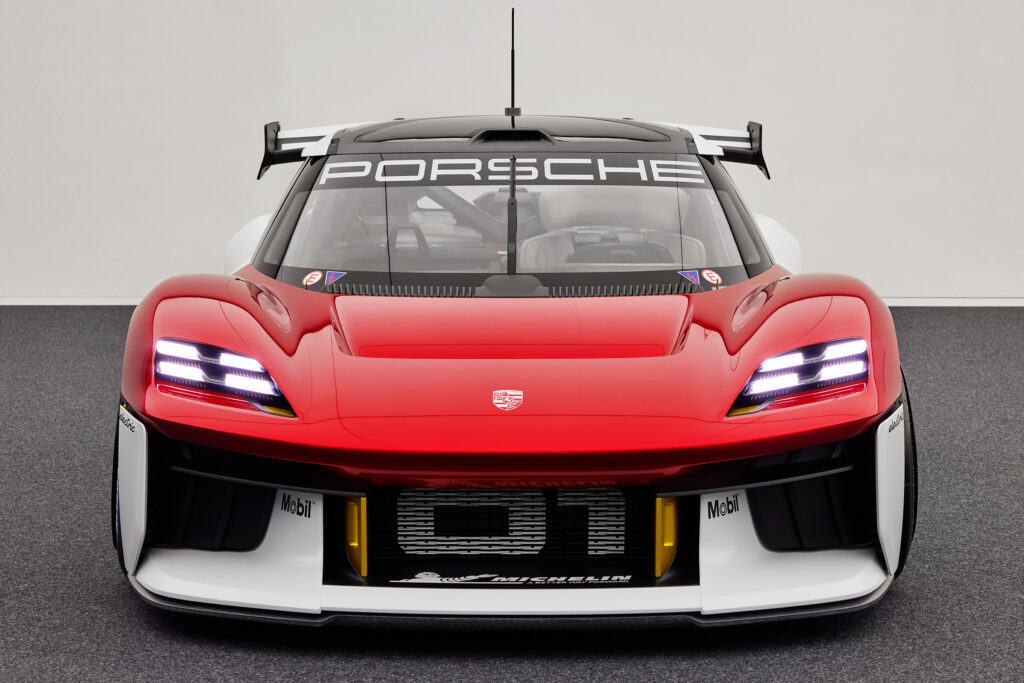
Porsche is still very committed to its GT3 Cup car, with the next generation cars to hit Australian race tracks in 2022.
But what the Mission R shows is that Porsche is serious about embracing e-mobility on the track, not just the road.
In announcing the Mission R Porsche even pointed to the Mission E that became the Taycan in four years and the Mission E Cross Turismo from 2018 that became the Taycan Cross Turismo in 2021.
Porsche noted that they “closely resemble the two concept studies in terms of appearance and technology”, the inference being that the Mission R is likely to remain true to its concept when (rather than if) it eventually hits the track as a customer car.

“Now, with the Mission R, Porsche is presenting its vision of what customer motorsports will look like in the future,” Porsche says.
From track to road
The bit that’s not mentioned in the official press release is how the Mission R will influence future roadgoing Porsche EVs.
Porsche’s race machines typically have a strong correlation with what happens on the road.
The GT3 Cup race car, for example, uses the same engine, body and basic suspension system as the 911 GT3 you can buy to drive around town. It’s as close as you’ll get to a roadgoing race car.
Similarly, the 918 Spyder hybrid hypercar had links to Le Mans race cars.
There’s little doubt some of the thinking in the Mission R – be it the battery cooling system, the electric motors, the 900V electrical architecture, the materials or the exoskeleton design – will make it into some future Porsche road cars.
And Porsche has confirmed it is “working on production cars at the same time”.
The expectation is that Porsche could create a roadgoing mid-engined (or mid-motor) electric sports car to sell alongside petrol-powered versions of the 718 Cayman and 718 Boxster.
That would give Porsche an idea of the appetite for an electric sports car without impacting the magic of the brand’s most iconic model, the 911.
All of which points towards an exciting high performance electric future from a brand that is embracing electromobility.

